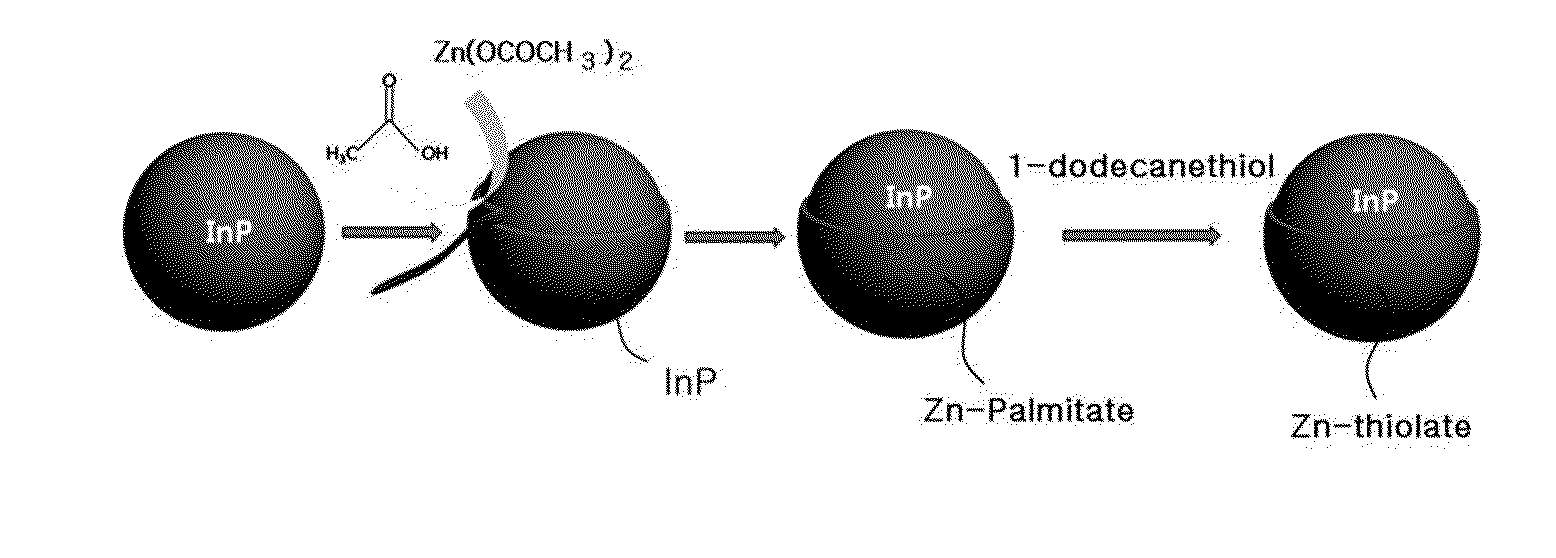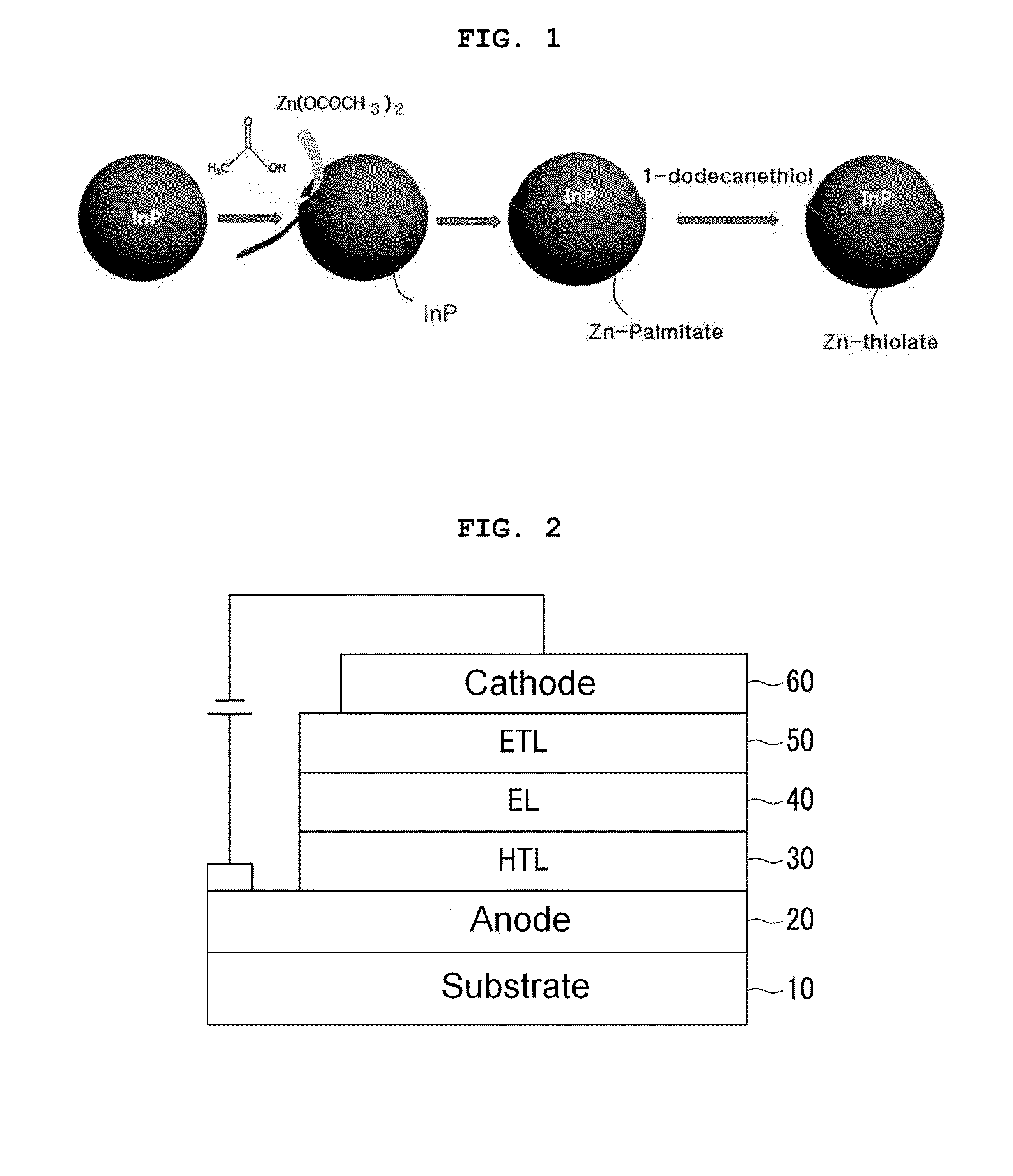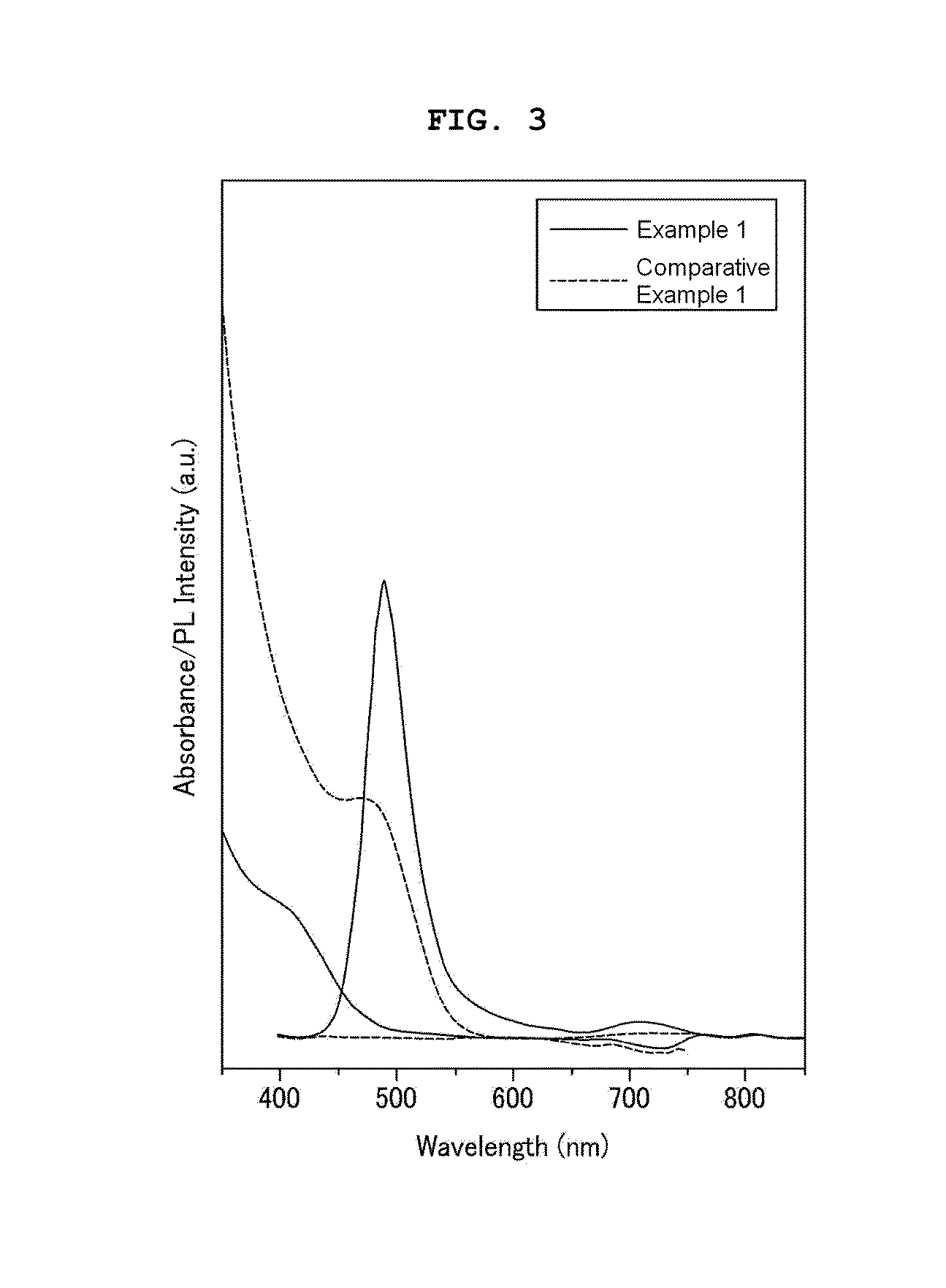Preparation method of nanocrystals coated with metal-surfactant layers
a technology of metal-surfactant layers and nanocrystals, which is applied in the field of preparation of nanocrystals coated with metal-surfactant layers, can solve the problems of surface defects, affecting the luminescence efficiency of semiconductor nanocrystals, and affecting the performance of nanocrystals
- Summary
- Abstract
- Description
- Claims
- Application Information
AI Technical Summary
Benefits of technology
Problems solved by technology
Method used
Image
Examples
example 1
Preparation of InP / Zn-Palmitate Nanocrystals Emitting Light at 520 nm
[0054]Indium acetate (0.04 millimolar (“mmol”), 11.34 milligrams (“mg”)) is added to a mixture of palmitic acid (0.12 mmol, 30.77 mg) and octadecene (2 milliliters (“mL”)), heated to 110° C., and maintained under vacuum for 1.5 hours to remove a small amount of water. The resulting mixture is heated to 300° C. under an argon atmosphere, and then a solution of trimethylsilyl-3-phosphine (0.02 mmol, 5 mg) in octadecene (3 mL) is added thereto. The reaction mixture is rapidly cooled to room temperature to give colloidal InP nanocrystals.
[0055]Zinc acetate (0.1 mmol, 18.35 mg) is added to the colloidal InP nanocrystals at room temperature and heated to 230° C. The growth of the InP nanocrystals is observed at intervals of 1 to 2 hours until the PL intensity increases. The mixture is cooled to room temperature to give colloidal InP core / Zn-palmitate shell nanocrystals. Then, the colloidal InP / Zn-palmitate nanocrystals a...
example 2
Preparation of InP / Zn-Palmitate Nanocrystals Emitting Light at 580 nm
[0056]0.12 mmol (34.034 mg) of indium acetate is added to a mixture of 0.36 mmol (92.31 mg) of palmitic acid and 2 mL of octadecene, heated to 110° C., and maintained under vacuum for 1.5 hours to remove a small amount of water. The resulting mixture is heated to 300° C. under an argon atmosphere, and then a solution of 0.06 mmol (15 mg) of trimethylsilyl-3-phosphine in 1 mL of octadecene is added thereto. The reaction mixture is heated to 270° C., maintained at 270° C. for 30 minutes, and rapidly cooled to room temperature to give colloidal InP nanocrystals. 0.30 mmol (55.04 mg) of zinc acetate is added to the colloidal InP nanocrystals at room temperature and heated to 230° C. The growth of the InP nanocrystals is observed at intervals of 3 to 4 hours until the PL intensity increases. The mixture is cooled to room temperature to give colloidal InP core / Zn-palmitate shell nanocrystals. Then, the colloidal InP / Zn-p...
example 3
Preparation of InP / Zn-Palmitate Nanocrystals Emitting Light at 600 nm
[0057]InP / Zn-palmitate nanocrystals are prepared in the same manner as in Example 2, except that 0.16 mmol (46.71 mg) of indium acetate is added to a mixture of 0.48 mmol (122.94 mg) of palmitic acid and 8 mL of octadecene, and 0.08 mmol (20 mg) of trimethylsilyl-3-phosphine is dissolved in 1 mL of octadecene. FIG. 5 shows that the InP / Zn-palmitate nanocrystals emit light at 600 nm.
PUM
| Property | Measurement | Unit |
|---|---|---|
| reaction temperature | aaaaa | aaaaa |
| reaction temperature | aaaaa | aaaaa |
| reaction temperature | aaaaa | aaaaa |
Abstract
Description
Claims
Application Information
 Login to View More
Login to View More - R&D
- Intellectual Property
- Life Sciences
- Materials
- Tech Scout
- Unparalleled Data Quality
- Higher Quality Content
- 60% Fewer Hallucinations
Browse by: Latest US Patents, China's latest patents, Technical Efficacy Thesaurus, Application Domain, Technology Topic, Popular Technical Reports.
© 2025 PatSnap. All rights reserved.Legal|Privacy policy|Modern Slavery Act Transparency Statement|Sitemap|About US| Contact US: help@patsnap.com



